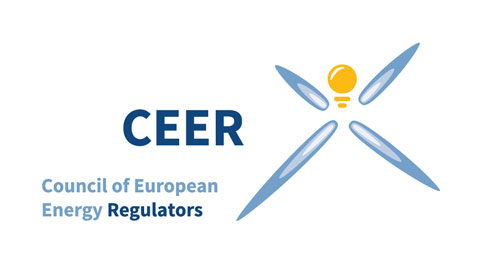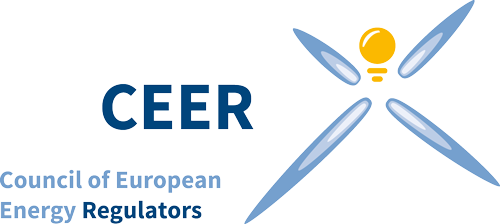February 2018

Editorial
CEER believes that delivering a New Deal for Energy Consumers in Europe requires well-functioning retail energy markets. Our CEER Roadmap to 2025 Well-functioning Retail Energy Markets shows how our national regulatory authorities (NRAs) are using a common set of metrics (e.g. percentage of prosumers, percentage of customers connected to bundled Distribution System Operators) to monitor moving closer to competitive, reliable and innovative retail markets to the benefit of customers. The country data show where (22) NRAs are currently on their journey of self-assessment using the metrics.
Upcoming events include our Flexibility workshop (1 March), and the not-to-be-missed World Forum on Energy Regulation (WFER) in Cancun (see International section).
We have lots of training courses from the fundamentals of regulation (with FSR) to legal training and Executive level seminars.
Roadmap to 2025 Retail Energy Markets – how regulators measure sufficient consumer engagement etc.
CEER believes strongly that retail energy markets should be competitive, innovative, and working in the interest of consumers. To help national regulatory authorities (NRAs) self-assess their national retail markets, we developed a common set of (25) metrics to test if the retails markets are working well. Our newly released Roadmap to 2025 Well-functioning Retail Energy Markets guides NRAs on self-assessment and tracks (country by country) which of the 25 key metrics chosen by CEER are currently being used by NRAs in their market monitoring. Our hope is to see competitive, reliable and innovative markets to the benefit of customers in each country by 2025.
What should a well-functioning retail energy market look like?
As a first step, in 2015, CEER developed a forward-looking framework defining what characterises a well-functioning (national) market in terms of outcomes customers want. CEER believes that two principles should be in place for energy markets to function well:
1. Competition and Innovation: There is a high degree of competition and innovation thrives to the benefit of consumers. DSOs provide quality services and facilitate a level playing field by acting as neutral and efficient market facilitators.
2. Consumer Involvement: Consumers are aware of key features of energy markets; they are empowered and are enabled to engage in market activities through which they can acquire further trust in the market and its actors.
In addition to these 2 overarching principles, we set out 8 key properties of well-functioning retail markets:
1. Competition and innovation
• Low concentration relative to their relevant market
• Low market entry barriers
• Close relationship between wholesale and retail prices
• A range of offers, including demand response
2. Consumer involvement
• High level of awareness and trust
• Availability of empowerment tools
• Sufficient consumer engagement
• Appropriate protection
How to assess if retail energy markets are working well to the benefit of consumers?
Our CEER position paper on well-functioning retail energy markets, Oct 2015) also sets out 25 metrics for NRAs to assess their markets, e.g.
• To measure market entry barriers:
o Percentage of customers connected to bundled DSO;
o Percentage of customers with regulated energy prices;
• To measure sufficient consumer awareness, trust and engagement:
o Percentage of consumers trusting the market
o Percentage of prosumers
o Percentage of inactive consumers
These metrics have been widely consulted up and piloted tested by NRAs.
In a second step, CEER further defined the 25 metrics (see the 2017 Handbook for National Energy Regulators) and provided guidance and training to NRAs on how to quantify the metric, source the data and use the metrics in practice. In this way, CEER helps NRAs self-assess their national retail energy market.
The NRA’s journey for each metric in the Handbook
CEER continues to help NRAs self-assess their national retail energy market. Our (Feb 2018) Roadmap to 2025 guides NRAs on how to proceed in the coming years in their path toward achieving well-functioning retail energy markets. The Roadmap shows that about half of the metrics are already being used by NRAs, and with country data, shows where each NRA is currently on that journey of self-assessment using the common set of metrics.
This process starts with data collectipn and continues with the actual self-assessment together with a gap analysis. This leads up to national recommendations and monitoring of the implementation of those recommendations
What’s next?
Going forward, CEER will train NRAs and monitor the progress of self-assessment. As markets are dynamics, we will have to review the metrics periodically and update or change metrics and/or definitions when necessary.
As well as our usual ACER-CEER Market Monitoring Report, we will again in 2018 have a more detailed focus on European retail markets (market structures, customer switching activities, regulated prices etc) in our CEER Retail Markets Report (see December 2017 edition).
Publications
- CEER Roadmap to 2025 Well-functioning Retail Energy Markets (Feb 2018)
International
Register now for the World Forum on Energy Regulation, Cancun, Mexico
Mr Bertrand Piccard (Chairman, and co-pilot of Solar Impulse, the first successful round-the-world solar powered flight) is confirmed as a keynote speaker.
Contact
Tel: +322 788 7330 or
+ 32 484 668 599

